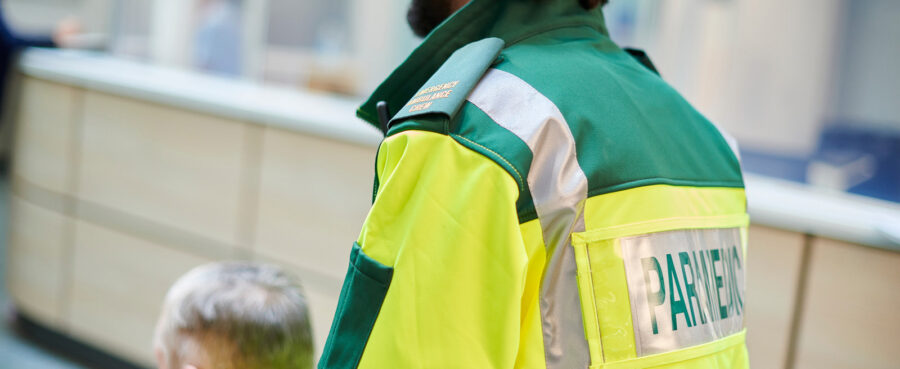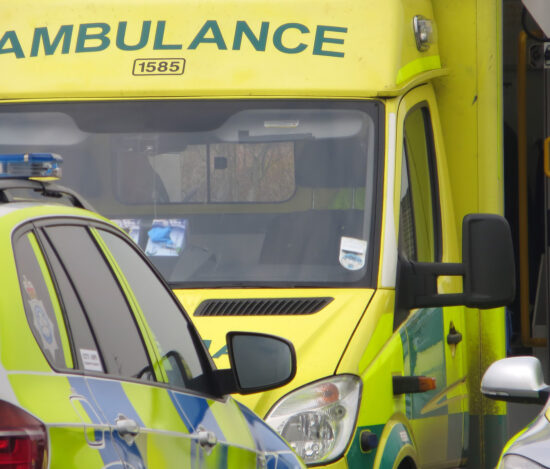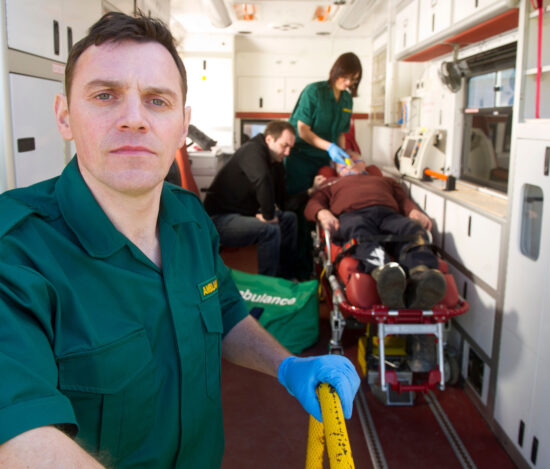Paramedic placements
Beyond technical skills – nurturing effective communication
Simulated placements for paramedics are growing, with some organisations approaching these placements innovatively, focussing on combining undergraduate paramedic facilitation skills with peer reviewing skills (Wilford et al., 2022). Some higher education institutions (HEIs) focus on clinical skills with manikin scenario-simulations and virtual reality driven learning, others utilise actor-based simulations.
Effective communication skills are crucial for paramedics and simulated placements with real people provide an opportunity to practice these skills. Communication is not only a key proficiency for paramedics according to the Health and Care Professions Council (HCPC) (HCPC, 2018), but given paramedic’s responsibilities to patients and their relatives means that rehearsal of these skills should not be overlooked in preference to technical skill acquisition.
Communication and care in HCPC standards for paramedics
The HCPC Standards of Proficiency for Paramedics serve as a foundational guide for shaping competent and compassionate paramedic practice. Within these standards, there are specific mandates that underscore the importance of both technical excellence and effective communication.
Effective communication stands as a pillar of paramedic’s practice. Paramedics are expected to be skilled communicators, capable of conveying critical information to patients, their relatives, bystanders, and fellow healthcare professionals. This proficiency in communication is not limited to just verbal exchanges; it extends to non-verbal cues, active listening, and empathy.

Paramedics must be adept at translating complex medical information into understandable terms, ensuring that patients and their families are well-informed about their condition, treatment options, and care plans. Effective communication is not only about delivering information but also about establishing trust, alleviating anxiety, and fostering a sense of partnership between the paramedic and the patient.
Another fundamental requirement set by the HCPC Standards is for paramedics to recognize the profound impact of culture, equality, and diversity on their practice. This recognition goes beyond mere acknowledgment; it necessitates a deep understanding of how these factors influence patient interactions, healthcare delivery, and overall outcomes. Paramedics are expected to navigate these aspects with sensitivity and empathy.
Furthermore, the standards call for paramedics to practice in a non-discriminatory and inclusive manner. This means providing care that is equitable, irrespective of a patient’s background, beliefs, or characteristics. It emphasizes the paramount importance of ensuring that no one is unfairly disadvantaged or excluded from receiving the care they need and deserve.

How SimComm can help
SimComm Academy has worked with HEIs to create simulated placement for paramedic undergraduates that focus specifically on finding this balance between technical and communication proficiencies. The simulated scenarios offered reflect the broad client base paramedics interact with patients, relatives, by-standers, other healthcare, and emergency service professionals, all from across the life span and from different cultural and social backgrounds.
The scenario focus on care, kindness and compassion, confidentiality and candour, supporting colleagues, de-escalation, safeguarding, inclusivity, and transgender and gender diversity.
Scenario development was undertaken by a range of healthcare professionals, and co-produced with lay developers, people who had experienced paramedic intervention. Actors were coached in role depiction and escalation, briefed regarding the learning outcomes, and had the pre-requisite experience in debriefing and feedback skills.


A balancing act
Its is imperative to highlight the indispensable role of effective communication in paramedic practice. The ability to communicate with empathy, clarity, and cultural competence directly influences patient outcomes, satisfaction, and the reduction of errors in high-stakes situations. Simulated placements emerge as a cornerstone in the development of these paramount skills, offering paramedic students a controlled yet dynamic environment to refine their communication abilities.
The involvement of skilled actors and experienced facilitators in these simulations is irreplacable, creating a safe space for practice and constructive feedback. Moreover, the co-production of scenarios with input from users ensures that the training is both relevant and responsive to real-world needs.
In recognizing the multifaceted dimensions of paramedic practice, from technical proficiency to compassionate communication, we pave the way for a new generation of paramedics equipped to deliver exemplary, patient-centred care in diverse and challenging healthcare settings.
Reference
- Wilford A, Wheatley S. HEE placement project –paramedics in the driving seat. International Journal of Healthcare Simulation. 2022 Nov 15;
- HCPC. The Standards of Proficiency for Paramedics [Internet]. HCPC. 2018. Available from: https://www.hcpc-uk.org/standards/standards-of-proficiency/paramedics/
- 3. Mangan J, Rae J, Anderson J, Jones D. Undergraduate paramedic students and interpersonal communication development: a scoping review. Advances in Health Sciences Education. 2022 Jul 19;27.





